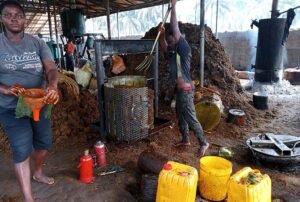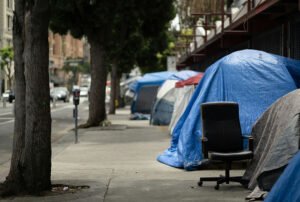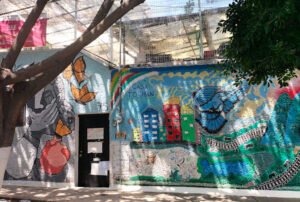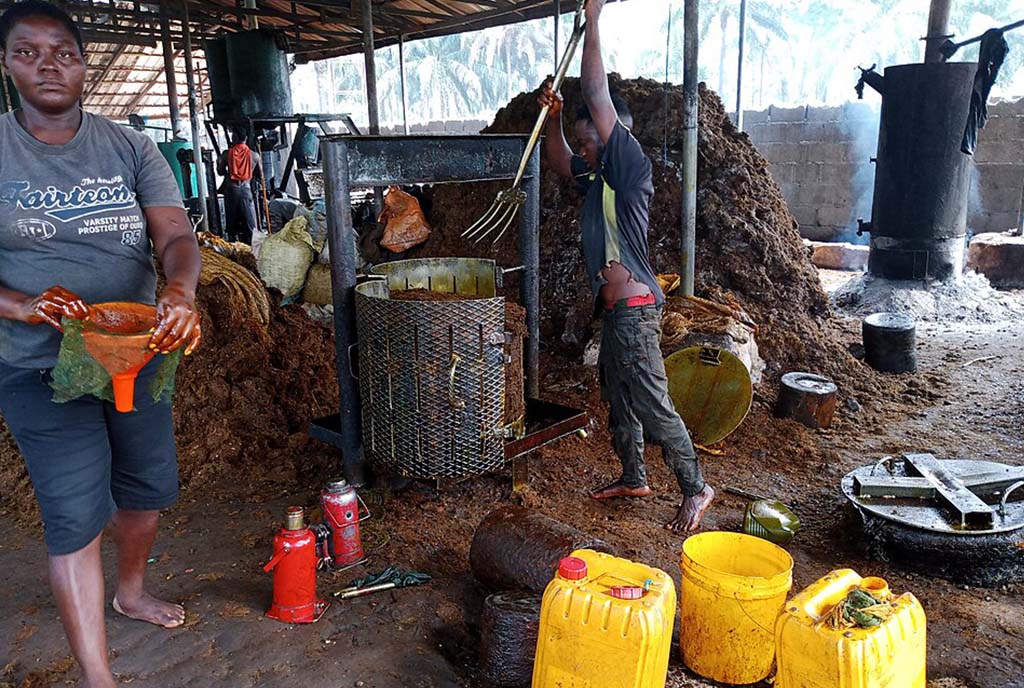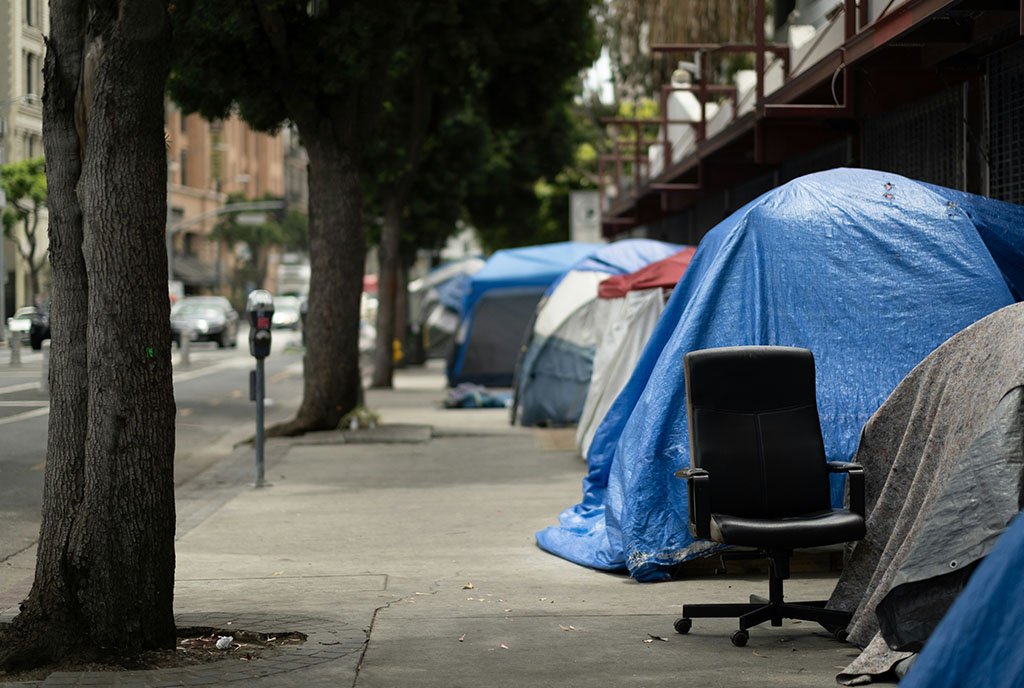

In June, over 200 co-op members, co-op developers, supporters, and community organizers from across the country gathered in St. Paul, MN, for the Network for Developing Conscious Communities (NDCC)’s third annual national conference on the Black cooperative agenda. Addressing the conference, Melvin Carter, St. Paul’s first African American mayor, said the city wanted to become “the co-op capital of the world.”
The fact that St. Paul’s mayor would keynote a co-op conference and call for a co-op-centered economy speaks to the increased prominence of the Black cooperative movement. The movement is rooted in a century-plus history of Black co-op organizing, but growth in recent years has been extraordinary.
This is particularly true in the food co-op sector, with a new wave of Black-led and people-of-color-led co-ops opening this decade in such places as Dayton, OH; Detroit, MI; and Boston, MA. There has also been a rising tide of Black-led worker co-ops, including an estimated two dozen in New York City alone.
The movement is rooted in a century-plus history of Black co-op organizing, but growth in recent years has been extraordinary.
At the conference, participants expressed far greater ambitions. Ron Hantz, founder and executive director of NDCC, noted pointedly, “We have to connect. We have to build. This is okay, but it ain’t where we want to be.”
At the conference, participants sought to address Hantz’s challenge—taking steps to develop a new national formation, which organizers call the National Association of Black Cooperators.
More Than Businesses
One central theme at the conference was the importance of thinking about co-ops as being more than businesses. Instead, participants discussed co-ops as essential building blocks of liberation and cultural transformation.
For example, co-op consultant LaDonna Sanders Redmond said that co-ops offer Black youth an opportunity “to see themselves as who they most want to be and who they can become.” She added that Black youth are asking for this themselves. Sanders Redmond recalled that when Seward Co-op in Minneapolis surveyed youth in 2021, the youth interviewed “challenged us to think about community wealth….How do we challenge inequality? How do we challenge the system?”
In response, Sanders Redmond advocated two key lines of focus: 1) to develop “cooperative economic strategies to advance wealth building and ownership” and 2) to “create a village” to support young people’s desire for a wealthy community while challenging existing systems that perpetuate inequality.
“Culture is the brain’s operating system.”
Omar Freilla, who has written in NPQ about the emerging Black co-op ecosystem and is coordinator of Collective Diaspora—a group that supports co-op development throughout the African diaspora—similarly emphasized the importance of fostering “collective ownership and collective control.”
Building a Black Cooperative Culture
If we don’t ground ourselves in our own sense of culture and cooperation, then we will teach people in the wrong way.
Repa Mekha, CEO, Nexus Community Partners
As was discussed at the conference, there is no single definition of cooperative culture. Mekha himself noted that if Black co-op members don’t define what cooperation means for them, “others will define it for us.”
“Culture is the brain’s operating system,” noted LaKeisha Wolf, executive director of the Ujamaa Collective in Pittsburgh. “It is how we see the world, and how we see our connections to everything, including people and the planet.”
At a panel on the solidarity economy, Rose Brewer, a professor of African American and African Studies at the University of Minnesota, insisted the goal should be to “change from the global capitalist imperialist economy that we have to one that centers humanity and care.”
Sign up for our free newsletters
Subscribe to NPQ's newsletters to have our top stories delivered directly to your inbox.
By signing up, you agree to our privacy policy and terms of use, and to receive messages from NPQ and our partners.
“How do we build infrastructure in a way that can support people and build for liberation?”
Brewer emphasized the historical roots behind current Black co-op organizing, noting that Black cooperation is not new. Not only is there an extensive history of Black co-op organizing in the United States, but, added Brewer, cooperative “practices have long been around in African communal and Indigenous cultures. It is very aligned in our ways of being.”
Brewer cited the African principle of ubuntu: “I am because we are,” as central to the culture of Black-led cooperatives. “Ontologically, in our very being,” Brewer said, “is the solidarity economy. She added, “Solidarity, collective work, and responsibility. These values were rooted on the continent.…The solidarity economy is part of an unrecognized history, a deep culture of communalism and cooperation, of Black ways of being.”
The Need for Movement Infrastructure
A key challenge facing participants at the conference is to build movement infrastructure. As Renee Hatcher—a law professor at the University of Illinois, Chicago, who specializes in community development—asked at the end of the solidarity economy session, “How do we build infrastructure in a way that can support people and build for liberation?”
It is no small question. As Hantz shared at the conference, his own group was inspired by the Poor People’s Development Foundation, which emerged out of the Poor People’s Campaign led by Dr. Martin Luther King, Jr. Hantz noted that the foundation had sought to build a national cooperative movement for Black and Indigenous people. “They were doing workshops,” Hantz explained. The group also had plans to do a national training program.
By the mid-to-late 1970s, the group had also entered the policy arena. In particular, it was promoting legislation to charter a national cooperative bank. The bill, which was advocated by the group, passed in the US House of Representatives by a single vote (199–198) in July 1977. An amended version of that bill became law in August 1978.
Many early cooperatives that were supported by the National Cooperative Bank, Hantz noted, “were Black-led and Brown-led.” But over time, Hantz related, “the perspective of the bank changed,” and loans began going primarily to higher income borrowers. Building sustainable movement infrastructure is thus key to ensuring that the gains of the current wave of Black co-ops are lasting.
Toward a National Association of Black Cooperators
The National Association of Black Cooperators’ first meeting was in October 2022, when about 35 Black co-op members came together at an initial organizing meeting in Pittsburgh. The group developed the following mission:
“Build a Black solidarity economy through:
- Grounding ourselves in collective principles and cultural practices
- Sustaining cooperative business development
- Advancing political education and a policy agenda
- Exchanging knowledge
- Engaging in intentional community-building.”
Subsequent meetings have occurred twice a year in Dayton, OH (March 2023), Washington, DC (November 2023), and Charleston, WV (spring 2024). Most of the group’s work has happened via virtual monthly committee (circle) meetings. At the national gathering in St. Paul, the meeting included presenting a draft set of principles and a report-back on focus groups designed to inform the creation of cooperative training modules.
At the conference, Wolf said that the “NABC has affirmed for me this yearning in this work we have been doing in Pittsburgh by ourselves to establish a place of practice of being ourselves, of cooperation.” Even though the group is not yet incorporated, Wolf observed that “spiritually, we are incorporated in a way that does need validation.”
Dr. Assata Richards, the director of the Sankofa Research Institute in Houston, TX, noted that part of the work of building NABC, too, is building muscles for collective leadership and collective decision making.
“Usually, power is centered at the top. There is a leader.” In NABC, however, a bottom-up approach prevails in which decisions are “made at the point where work is being done.” This, Richards noted, requires operating under principles of cocreation and asking such governance questions as: “How do you build an agenda together? How do you build consensus? How do you talk about the tensions that emerge in a meeting?”
Operating in this manner, Richards emphasized, requires having a care team—to care for the group as a whole at co-op meetings. It also requires making space to workshop concepts and to train co-op members. Now, Richards added, “We are at the point of implementation.”
There is, however, still much work to be done. For her part, Wolf noted that the principles needed further refinement. In particular, she said, this means “breaking down” each principle. The goal is not simply to define principles but to illustrate them. Wolf offered an example with the principle of intersectionality. “What do we mean by intersectionality? What does it look like? What does it not look like?”
For his part, Hantz sought to locate Black cooperative organizing in a broader context. “We’re part of a movement,” Hantz said. “We should challenge ourselves to do more. We got to keep rising. Develop it so we can pass it on.”



